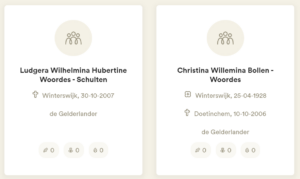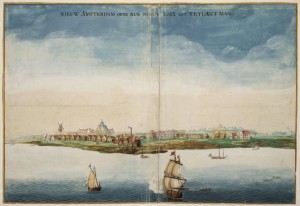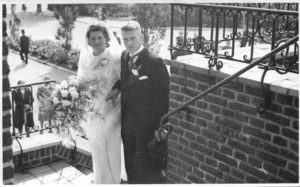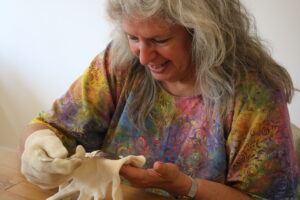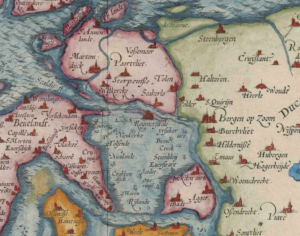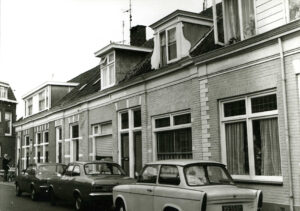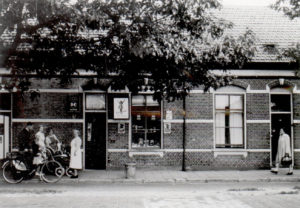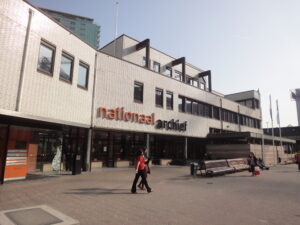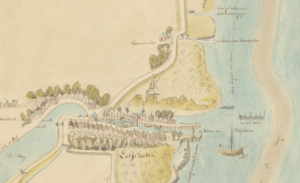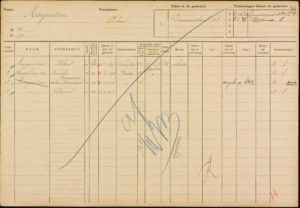Mensenlinq is a website where many current newspapers publish their family announcements. It is a good place to find the recently deceased. It can be difficult to find recent deaths since death records are not public for 50 years and recent newspapers are not published online due to copyrights. Mensenlinq allows you to search for the announcements that families placed in newspapers. See the source Family Announcements for more information about this source. By default, Mensenlinq only … [Read more...]
Quick tip – Identical place names in New and Old Netherland
If you are doing in New Netherland, the Dutch colony in what later became New York and the surrounding area, you may come across place names that exist in both the (old) Netherlands and New Netherland. When you come across a place in records and you cannot find the person in the records of that town, consider that perhaps the other place is meant. For example, a New Amsterdam marriage record may refer to a bride from "Vlissingen" without specifying whether that is the town on Long Island or the … [Read more...]
Quick tip – No marriage license or bond
In the Netherlands, there are no marriage licenses or marriage bonds like you may be familiar with in other countries. The only way to get married was to have banns read, typically for three consecutive weeks. That gave others the opportunity to raise objections, for example if one of the parties was promised to another, or if the couple was too closely related. In extraordinary circumstances, you may find dispensations to have the banns read all on the same day, but that is extremely rare. … [Read more...]
Quick tip – Friesland memorabilia
Hessel de Walle created a wonderful website with texts of graves in churches, mourning signs, stones with names, silverware, signet rings, etc in Friesland. In many cases, this includes a photo of the object. The website has the following search options: Gemeente: Municipality Plaats: Town Typen: Types. Achternaam: Last name Voornaam: First name Patronymicum: Patronymic Beroep: Occupation Foto: Photo Portretzerk: Grave portrait Latijn gebruikt: Latin … [Read more...]
Quick tip – Drowned Places
The Netherlands is located in the delta of several of Europe's major rivers, including the Rhine, the Scheldt, and the Meuse. Over time, more than a hundred villages and cities in the Netherlands were lost to water. In a few cases, catastrophic floods washed away a whole town, like during the St. Elisabeth Flood of 1421. In other cases, repeated smaller floods caused people to abandon a place. This happened in West-Vlieland and Reimerswaal, for example. It could also be that the townsfolk … [Read more...]
Quick Tip – Check the websites of the archives
Not all information that is kept in Dutch archives is available via national websites like WieWasWie or Open Archives. You can check the map of archives in the Netherlands to see where the records are kept for the place where your ancestors lived. Often, the websites of the archives will have additional information. This can include images of the towns, finding aids with scans of unindexed records, or newspapers. You may even be able to find photos of the streets where your ancestors lived. … [Read more...]
Quick Tip – Did the boundaries change?
Over the past two hundred years, Dutch municipalities have seen many boundary changes. In the past 50 years especially, many smaller municipalities have merged to form larger municipalities. Understanding these boundary changes can help you figure out if your ancestor moved, or if they continued to live in the same place but the municipality changed. For an overview of all municipalities in the Netherlands since 1811 including boundary changes, see the website Gemeentegeschiedenis. Example: … [Read more...]
Quick tip – Order records in advance
If you are visiting a Dutch archive in person, please check their website. Often, you can order records in advance. That way, the records will be waiting for you when you arrive, and you can start your research right away. Some archives provide an order button from the catalog, while others allow you to email a list of the records you want to consult. … [Read more...]
Quick tip – Use image banks at archives
Many archives have online image banks ("beeldbank") with their digitized image collections. Things you may find in there: Photos of houses and important buildings Prints, drawings, paintings of local scenes Maps Posters of local businesses, exhibitions, political propaganda Building plans of houses City ordinances I love going through these images. They give me a sense of the place. If I am lucky, I could find a photo of a house where my ancestors lived, or a drawing of … [Read more...]
Quick tip – Abbreviations in Population Registers
The website Uit de oude koektrommel has a useful page with abbreviations you may come across when using population registers. The page has four categories: Algemeen [general] Kerkelijk gezindte [Religious affiliation] Plaatsen en provincies [Place names and provinces] Landen [Countries]. The page is in Dutch, but once you know the full term you can often use a translator like Google Translate to translate the terms to a different language. … [Read more...]
